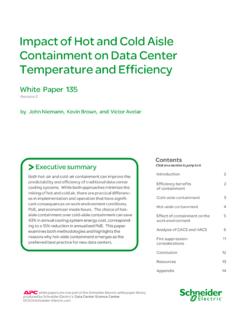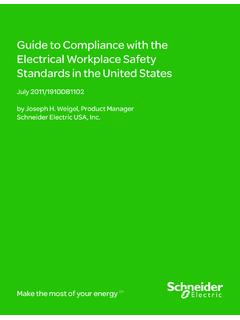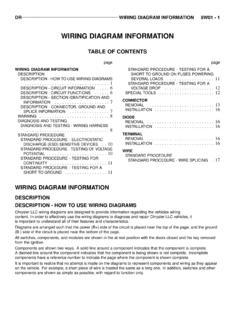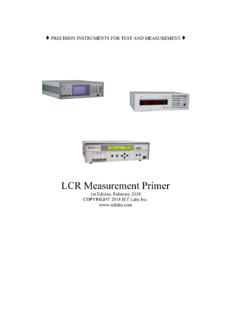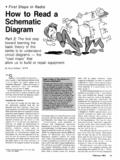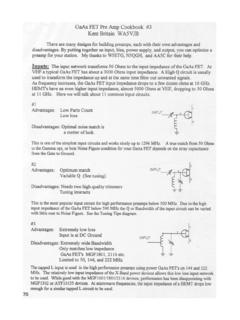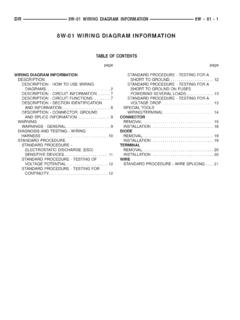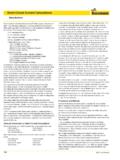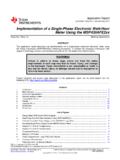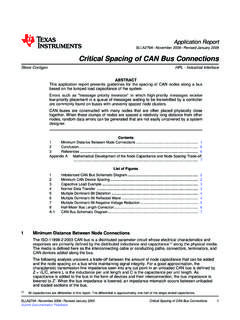Transcription of Line to Ground Voltage Monitoring on …
1 Line to Ground Voltage Monitoring on ungrounded and impedance grounded power Systems December 2010/AT301. by Reza Tajali, Square D power Systems Engineering Make the most of your energy SM. Revision #1 12/10. Abstract power Monitoring devices are sometimes used on ungrounded and impedance grounded systems to record and alarm on line to Ground voltages. This recorded line to Ground Voltage data can be manipulated using a host of data analysis tools to evaluate insulation stress on power system components.
2 However, ungrounded and impedance grounded systems have specific issues that impact proper application of metering equipment. Get connected Voltage transformers are especially prone to misapplication. This paper is intended to provide a road map for to power proper application of power Monitoring in these circuits. The subject of grounding is explored to demonstrate the basic issues with ungrounded systems. A discussion of metering principles is provided to identify the limitations for this type of metering.
3 Ample discussion is provided on the subject of controlling ferro-resonance. I. Introduction power monitors are generally designed for two basic metering connections. Three element metering is normally used on 3 4w feeders where system neutral is available. These systems are solidly grounded . Two element metering is generally applied to any 3 3w feeder. A 3 3w feeder is one for which system neutral is not available or can not be used. Specifically this includes ungrounded Delta, ungrounded wye and impedance grounded wye systems.
4 See Figure 1. The special application discussed in this paper utilizes three element metering on an ungrounded or impedance grounded system. This is a variation from the norm in metering electricity. This method of metering is applied to measure line to Ground voltages. Line to Ground Voltage Monitoring on ungrounded and impedance grounded power Systems II. Metering Accuracy The principle behind all electricity meters, most popularly known as Blondel theorem, is stated as follows: The total power of a general n-phase system is the sum of n powers.
5 These powers are given by n currents which issue from the n terminals, with the n potential differences of these terminals against any arbitrary Get connected terminal.. to power For a three phase system this principle is shown graphically in Figure 2. The reference point for voltages (Vx). can be any point. In the case of the metering system discussed in this paper, this point is taken to be the earth potential. This point does not have to be the neutral of the system. With voltages measured line to Ground in an ungrounded or impedance grounded system, the individual phase power values (KW, KVAR, KVA) may be meaningless.
6 Some of these individual phase powers may come out positive, some may come out negative. But, per Blondel's theorem, the total 3 phase power will always add up to the correct value. Additionally, if the meter calculates power factor by dividing 3 phase power with 3 phase KVA, the power factor values will be correct. If the meter displays any individual phase power factor values, those values will be meaningless. There is not one consistent method for calculating the power factor especially in the presence of current and Voltage distortion.
7 Different power monitors use different methods. Individual manufacturer must be consulted. Disturbance Monitoring is an important feature of power monitors which will be affected by the connection method. With the three element connection discussed in this paper, disturbances (sag, swell, transients) are measured with respect to Ground . Voltage distortion is also measured with respect to Ground . Care must be exercised when interpreting these data. Vc Ic Va Ia Vx Ib Vb Figure 2: Blondel theorem III. What to Measure The following values are of particular interest on ungrounded systems: 1.
8 RMS value of line to Ground voltages: A significant increase in Voltage unbalance will signify a Ground fault condition. 2.) Line to Ground Voltage transients: If the system is ungrounded , be prepared to see a great number of transients on some feeders especially on an aging power system. These transients may disrupt sensitive electronic equipment and stress the insulation on electrical machinery. Waveform captures from these transients can be used to evaluate possibility of partial (arcing) Ground faults and ferro-resonance.
9 AT301 | 3. Line to Ground Voltage Monitoring on ungrounded and impedance grounded power Systems IV. impedance grounded Systems Figure 3 depicts the Voltage connection used for Monitoring line to Ground voltages on an impedance grounded systems. By Monitoring line to Ground voltages it is possible to detect and alarm in case of Ground faults. Get connected In addition to individual phase currents, the power monitor will measure and display the vector sum of the to power phase currents. With the connection under discussion, this vector sum will be equal to the Ground current.
10 Some power monitors have the capability to directly measure the Ground current. See Figure 4. Even though the Voltage transformers are connected line to Ground , it is recommended that the transformers'. primary side have a Voltage rating at least equal to the system's line to line Voltage . This is because a line to Ground fault on any phase will impress the line to line Voltage on the transformers on the other two phases. This type of system is not prone to Voltage transformer ferro-resonance. Therefore, the metering circuit will not require any burdening resistors (the subject of ferro-resonance will be discussed later in this paper.)

